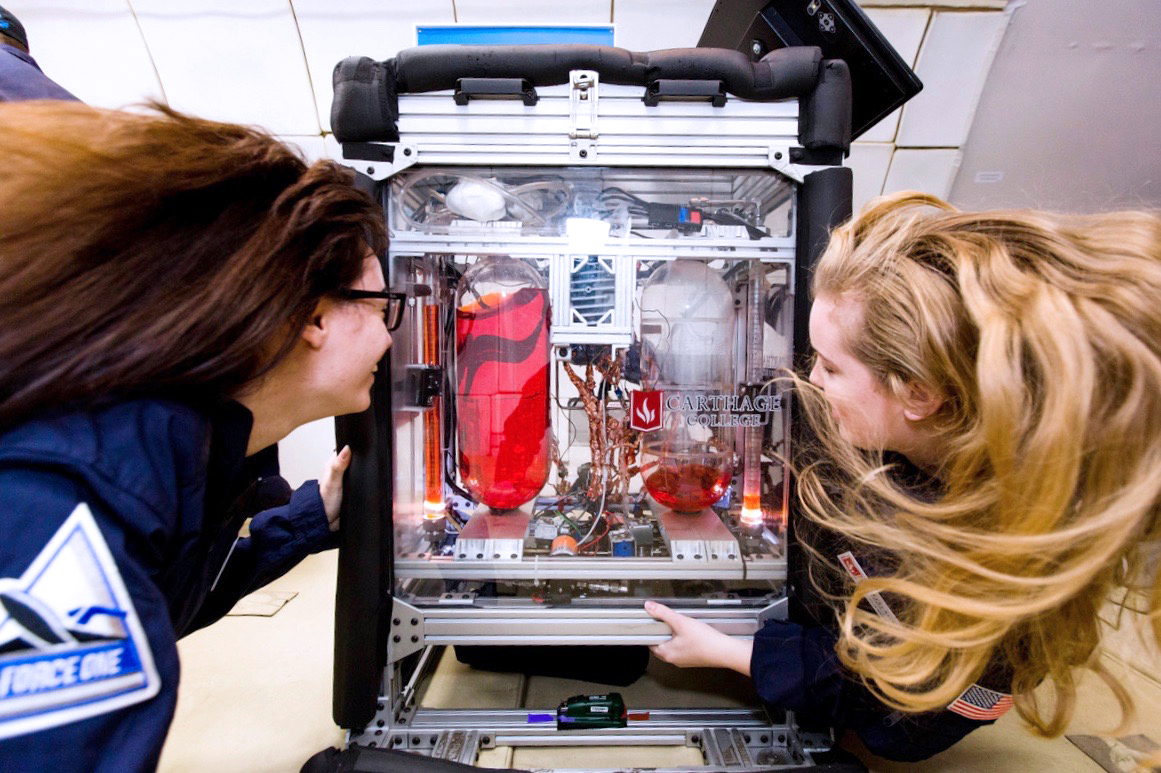Greg Odegard
Michigan Tech
STRI 2017 Ultra-Strong Compositites by Computational Design Quad Chart
The Institute for Ultra-Strong Composites by Computational Design (US-COMP)
Vision
The Institute for Ultra-Strong Composites by Computational Design (US-COMP) will serve as a focal point for partnerships between NASA, other federal agencies, industry, and academia to: (1) enable computationally-driven development of CNT-based ultra-high strength lightweight structural materials and (2) expand the resource of highly skilled scientists, engineers and technologists in this emerging field to enhance the U.S. leadership in critical lightweight structural materials.
Background
As NASA strives to extend human exploration to Mars and beyond, material performance requirements increase dramatically relative to those of the current state of the art (SOA). To transport, land and support humans on Mars will require materials with significantly increased performance-to-weight ratios compared to current carbon fiber (CF) composites (CFRPs) or metallic alloys. Thus, new ultra-high strength lightweight (UHSL) materials must be developed. Breakthroughs and rapid progress in nanomaterial research over the past two decades offer new opportunities to explore and develop UHSL materials to go beyond the SOA CFRPs. Compared to the SOA high-strength CF, such as T1100GC from Toray and IM10 from Hexcel with tensile strengths, moduli and failure strains up to 6.9 GPa, 324 GPa and 2%, respectively, individual carbon nanotubes (CNTs) with molecular perfection and low density can provide up to a 200 GPa tensile strength, 1,400 GPa modulus, and 20% failure strain, which make them ideal candidates for developing lightweight UHSL materials. Largely due to the investment in the U.S. National Nanotechnology Initiative, we now understand the fundamental structure-property relationship of CNTs and have successfully demonstrated that the structural properties of CNT yarns and nanocomposites from small test samples are comparable to current CF and CFRP materials. For instance, NASA researchers have developed CNT composite overwrapped pressure vessels to make sizable parts that demonstrate a ring specimen failure load increase of 200% with only 11% weight penalty. Deep space exploration will require a material performance-to-weight ratio of at least 2-3 fold over current CFRPs. This necessitates a fundamental understanding of how to optimize multiscale load transfer in CNT assemblages as well as the computationally guided development of novel hierarchical composites and enabling manufacturing processes to achieve the UHSL requirement 2-3 times higher than SOA CFRPs and CNT nanocomposites. US-COMP will move CNT composite technology from a TRL of 1 to 4, culminating in laboratory-scale tests of UHSL panels. The institute will capitalize on its expertise and existing partnerships to facilitate UHSL materials development, strengthen NASA’s ties to the academic community and key industrial partners, and train a new generation of materials researchers.
Research objectives
The research objectives of US-COMP are to:
- Establish a new computationally-driven material design paradigm for rapid material development and deployment
- Develop a novel UHSL structural material for use in deep space exploration. The panel-level tests and demonstration of the novel materials will be carried out to move the developed technology to TRL-4 or higher
- Develop modeling, processing, and testing tools and methods for CNT assemblage-based UHSL materials
- Train a pool of highly skilled scientists and engineers to contribute to the materials development workforce
Impact
The team will develop the following technologies and have a major impact on the aerospace community:
- Lightweight structural materials based on 1 dimensional and 1.5 dimensional CNT building blocks with the exceptional strength, modulus, and fracture toughness properties necessary for manned Mars missions and other space explorations
- A new computationally-driven materials design paradigm to develop the UHSL material of interest and for future rapid materials design and development
- Fundamental understanding of load transfer and multiscale failure mechanisms of CNT assemblage composite materials to approach their theoretical performance
- A full set of engineering performance data from for the developed UHSL material
- A new suite of multi-scale mechanical characterization tools and protocols for CNT materials
Participants
The US-COMP team consists of four participant universities: Michigan Tech University, Florida State University, University of Utah, and Massachusetts Institute of Technology; seven other universities: Florida A&M University, Johns Hopkins University, Georgia Institute of Technology, University of Minnesota, Penn State University, University of Colorado, Virginia Commonwealth University; and Nanocomp Technologies, Solvay, and the Air Force Research Lab.
The expertise and the diversity of the team with 22 faculty, 2 industrial experts, and AFRL participation will be vital to achieving this vision. The Simulation and Design Team (SDT) of 11 faculty will integrate leading expertise and promising preliminary results to focus on CNT assemblage molecular structures/defect-property relationships, quantification of load transfer efficiency, interface formation and failure modes, mesoscopic modeling, and large-scale molecular dynamics simulation to systematically develop computational design methodologies and optimization tools. The Material Synthesis Team (MST) of 4 researchers will pioneer precise patterning synthesis and optimize hierarchical nano/micro microstructures to realize unique confined interphases for performance enhancement. They will also explore and test model composites design concepts discovered by the SDT. The Material Manufacturing Team (MMT) of 6 researchers will focus on the scale-up manufacturing and functional properties of highly aligned and concentrated CNT composites with long-range-order microstructures. The Testing and Characterization Team (TCT) of 4 experts will conduct multiscale and functional property characterization of the CNT composites and develop new test methodologies to explore this new class of materials. Each of the four teams will have a team leader, and the four team leaders will constitute the US-COMP leadership team. This team will coordinate the efforts between teams and consult the Technical Advisory Board (TAB) on a frequent basis for directional guidance.
The team represents a diverse group in terms of discipline, experience, and expertise. With a strong leadership structure, this diversity will lead to a highly functional and productive institute.































